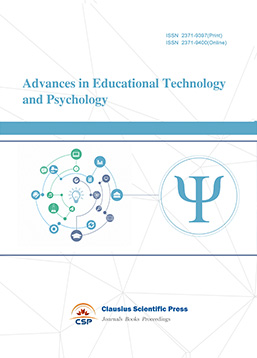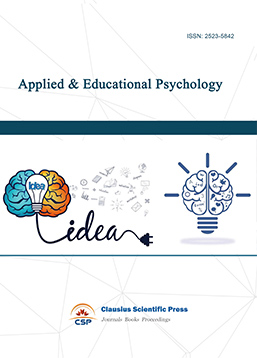Curriculum Reform of Interior Design 1+X with Integration of "Job-Course-Certificate"
DOI: 10.23977/trance.2024.060622 | Downloads: 20 | Views: 839
Author(s)
Tiantian Yu 1
Affiliation(s)
1 School of Civil Engineering and Architecture, Wenzhou Polytechnic, Wenzhou, Zhejiang 325000, China
Corresponding Author
Tiantian YuABSTRACT
As society's demand for interior design talents continues to increase, the traditional interior design curriculum system has problems such as being out of touch with industry needs and insufficient practical operational capabilities of students, and is in urgent need of reform. In order to effectively solve this problem, this paper proposes a curriculum reform plan for "Interior Design 1+X" that integrates "job, course and certificate", aiming to improve students' practical ability and employment competitiveness by combining industry job requirements, curriculum setting and professional qualification certification. The research methods include literature review, questionnaire survey, expert interview and field research. First, the gap between interior design curriculum and industry needs is analyzed, and the direction and goals of the reform are clarified. According to the requirements of the Interior Design 1+X certificate, the course framework has been redesigned to integrate knowledge in design, construction, and project management to ensure that the course content is highly consistent with industry standards. At the same time, during the teaching process, by combining theoretical learning with practice, students' operational capabilities are strengthened to ensure that students can master the skills and knowledge required in actual work. After the reform pilot is implemented, relevant data is collected by evaluating the feedback from students, teachers and enterprises. The results show that the reformed curriculum system has greatly improved students' practical ability, especially in the creativity and implementation of design plans. Students' operational skills have increased by 35% and course satisfaction has increased by 35%. More importantly, the student employment rate has also increased significantly after the reform, from 60% before the reform to 80%. In addition, the proportion of students obtaining 1+X vocational qualification certificates increases from 40% before the reform to 85%. To sum up, the curriculum reform based on the integration of "job, course and certificate" has effectively narrowed the gap between interior design education and industry needs, and cultivated more high-quality, compound talents that meet market needs.
KEYWORDS
Interior Design, Job-Course-Certification Integration, Curriculum Reform, Practical AbilityCITE THIS PAPER
Tiantian Yu, Curriculum Reform of Interior Design 1+X with Integration of "Job-Course-Certificate". Transactions on Comparative Education (2024) Vol. 6: 157-165. DOI: http://dx.doi.org/10.23977/trance.2024.060622.
REFERENCES
[1] Colenberg S, Jylhä T. Identifying interior design strategies for healthy workplaces–a literature review[J]. Journal of Corporate Real Estate, 2022, 24(3): 173-189.
[2] Karyatun S, Soelton M, Arief H, et al. Recognizing How the Organizational Communication and Distributive Justice Towards Organizational Citizenship Behavior in Interior Design Companies–Indonesia[J]. The Seybold Report Journal, 2022, 17(10): 1910-1922.
[3] Triatmaja S. Designing a design thinking model in interior design teaching and learning[J]. Journal of Urban Society's Arts, 2020, 7(2): 53-64.
[4] Chen J, Shao Z, Cen C, et al. HyNet: A novel hybrid deep learning approach for efficient interior design texture retrieval[J]. Multimedia Tools and Applications, 2024, 83(9): 28125-28145.
[5] Sitanggang N, Luthan P, Dwiyanto F. The effect of google sketchup and need for achievement on the students' learning achievement of building interior design[J]. International Journal of Emerging Technologies in Learning (iJET), 2020, 15(15): 4-19.
[6] Sawatmongkhonkul K, Joneurairatana E, Sirivesmas V. Exploring Parametric Concepts and Principles for Furniture and Interior Design[J]. Interiority, 2024, 7(1): 101–120
[7] Huber A M. Exploring Informed–Design Services during the Project–Defining Phases in Commercial Interior Design[J]. Journal of Interior Design, 2021, 46(2): 11-33.
[8] Ahmad N, Mustapha A A. Interior design practice: project management competency framework/Nur Maizura Ahmad Noorhani and Arniatul Aiza Mustapha[J]. Built Environment Journals, 2021, 18(1): 98-105.
[9] Han X. Application of green design concept in interior design practice[J]. Journal of World Architecture, 2022, 6(3): 56-62.
[10] Kasap T L, Kasap C. Interior design studies for individuals with developmental disabilities: A systematic review of national literature [J]. IDA: International Design and Art Journal, 2021, 3(1): 146-158.
[11] özlem Yurtgün H, Doğan R K. Interior Architecture Project Approach with Design-oriented Thinking Model: Clinic Designs[J]. Journal of Architectural Sciences and Applications, 2024, 9(1): 302-317.
[12] Enwin A D, Ikiriko T D, Jonathan-Ihua G O. The role of colours in interior design of liveable spaces[J]. European Journal of Theoretical and Applied Sciences, 2023, 1(4): 242-262.
[13] Gao F, Zhang P. Performance evaluation of industry-education integration in Higher Vocational Colleges: An evidence from China[J]. International Journal of Emerging Technologies in Learning (iJET), 2020, 15(23): 208-219.
[14] Zhang Y, Zhou B. The Innovation of Computer Network Cloud Computing Talent Training Mode under the Background of 1+ X Course Certificate Integration[J]. International Journal of Education and Humanities, 2022, 3(1): 23-27.
[15] Hendy A A M, Fahmy S F A, Elsharawy E B E. The Impact Of The Accreditation Organizations' Criteria On The Interior Design Graduate Attributes (Case Study Of UAE Interior Design Programs)[J]. International Journal of Scientific and Technology Research, 2021, 10(1): 266-280.
| Downloads: | 14278 |
|---|---|
| Visits: | 550788 |

 Download as PDF
Download as PDF



